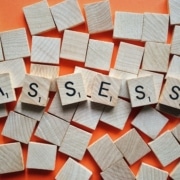How to Make Lying at Your Company Normal
 Earlier this month at the Beacon Theater, in New York City, Daniel Kahneman, famed author of Thinking, Fast and Slow, had a conversation with neuroscientist Sam Harris. It ranged over many of the topics the Nobel Prize-winning behavioral scientist has explored in his work. This included the “remembering” and “experiencing” self, where intuitions reliably fail, and—while discussing obstacles to desirable behavior—the need for ethical systems design. “You want to create systems whereby even mediocre, which is to say normal people, can behave better and better effortlessly,” Harris said. “You don’t want systems where you have to be a saint to do something good or proper.”
Earlier this month at the Beacon Theater, in New York City, Daniel Kahneman, famed author of Thinking, Fast and Slow, had a conversation with neuroscientist Sam Harris. It ranged over many of the topics the Nobel Prize-winning behavioral scientist has explored in his work. This included the “remembering” and “experiencing” self, where intuitions reliably fail, and—while discussing obstacles to desirable behavior—the need for ethical systems design. “You want to create systems whereby even mediocre, which is to say normal people, can behave better and better effortlessly,” Harris said. “You don’t want systems where you have to be a saint to do something good or proper.”
Unfortunately it is not uncommon to hear about such systems, like Wells Fargo’s workplace not too long ago—it burdened managers and employees with perverse pressures and incentives to lie and led, as Linda Trevino and Niki A. den Nieuwenboer explained, to a predictable scandal. Ron Carucci, a seasoned business consultant and an Advisory Board Member at Ethical Systems, recently wrote in Harvard Business Review that the sort of wide-scale dishonesty and deceit that was on display at Wells Fargo may be initially “hard to fathom.” It’s easier to grasp when you realize that misbehavior may be more of a result of systemic organizational factors rather than quirks of individual or team psychology. Carucci’s team came to this conclusion through a 15-year longitudinal study, the findings of which he presented this month at the Ethical Systems conference at NYU Stern, “Ethics By Design: Managing Organizations in an Era of Anxiety, Polarization, and Disruption” (catch some highlights of the conference on Twitter: #EthicsByDesign2019).
Carucci and his team analyzed 3,200 interviews, conducted during 210 organizational assessments. They found that the existence of four systemic factors could make lying at a company normal: 1) a lack of strategic clarity, 2) unjust accountability systems, 3) poor organizational governance and 4) weak cross-functional coordination.
Strategic clarity is the sense among employees and leaders that a company’s mission, aims, and values are aligned. To foster it, Carucci says, it is essential for everyone—from the CEO to front-line employees—to “have the chance to discuss, debate, and embrace each strategic objective.” He reported that without it, you get quotes from workers like this: “Our priorities change by the week. Nobody wants to admit we’re in trouble, so we’re grasping at straws. We don’t know who we are anymore, so we’re just making things up.” His team also put some numbers on how much strategic clarity matters to honesty: Their statistical models showed that just a 10-percent bump in strategic clarity, reflected in a common and truthful appreciation of the company’s goals, can increase truth-telling by 5 percent.
Having employees know they’re getting a fair shake goes a long way, Carucci and his team found. If workers get the sense that, instead, their performance is largely untethered to the sort of feedback managers offer, and the recognition they receive in the workplace, then employees can feel forced to embellish accomplishments or obscure shortcomings, a pretext for improbity. “Research on organizational injustice,” Carucci notes, “shows a direct correlation between an employee’s sense of fairness and a conscious choice to sabotage the organization.” So, if a company decides to implement a way to measure employee performance, it better do it fairly, because workers are, Carucci writes, about four times more likely to “withhold or distort information” if they get the sense that their work is being measured unjustly.
What makes poor governance so intolerable isn’t mere inefficiency—it is how it encourages the people governed to behave poorly, too. In his study, Carucci found that when organizations lack effective governance, they’re three times more likely to see workers not be upfront and honest. This happens as a result of faulty decision-making forums—when it is hard or impossible to have “honest conversations about tough issues,” Carucci writes, “truth is forced underground, leaving the organization to rely on rumors and gossip.” The models from Carucci’s study show, however, that just a 23 percent increase in governance efficacy—reflected in employees knowing both who makes what decisions—brings about a 10 percent bump in truth-telling. Clear decision rights, and openness to dissenting ideas, are key.
You can also expect people to start shading the truth when their departments not only work at cross-purposes, but antagonize one another. “When cross-functional rivalry or unhealthy conflict is left unaddressed, an organization is 5.82 times more likely to have people withhold or distort truthful information,” Carucci writes. “Fragmentation, especially across divisional lines, creates dueling truths, resulting in one side having to prove they are right, and the other wrong.” An in-group, out-group dynamic can ignite. Those on the “other” team, Carucci notes, can be seen as an “enemy to be feared, resented, or blamed.” Workers reporting more collaboration and coordination with other divisions in an organization was associated with more honesty: improve the first by 25 percent, Carucci writes, and you increase the second by 17 percent.
Scoring poorly on any one of these four factors can lead to problems. But, organizations that manage to neglect all of them can expect a much higher likelihood—15 times more—of an “integrity catastrophe” compared to organizations that better manage these systemic factors. The message is clear. As Carucci concludes, “By taking aim at these four issues, you can make it far more likely that your company will create the culture of honesty you, your employees, and your customers eagerly want.”
Brian Gallagher is Ethical Systems’ Communications Director. Follow him on Twitter @brianga11agher.









